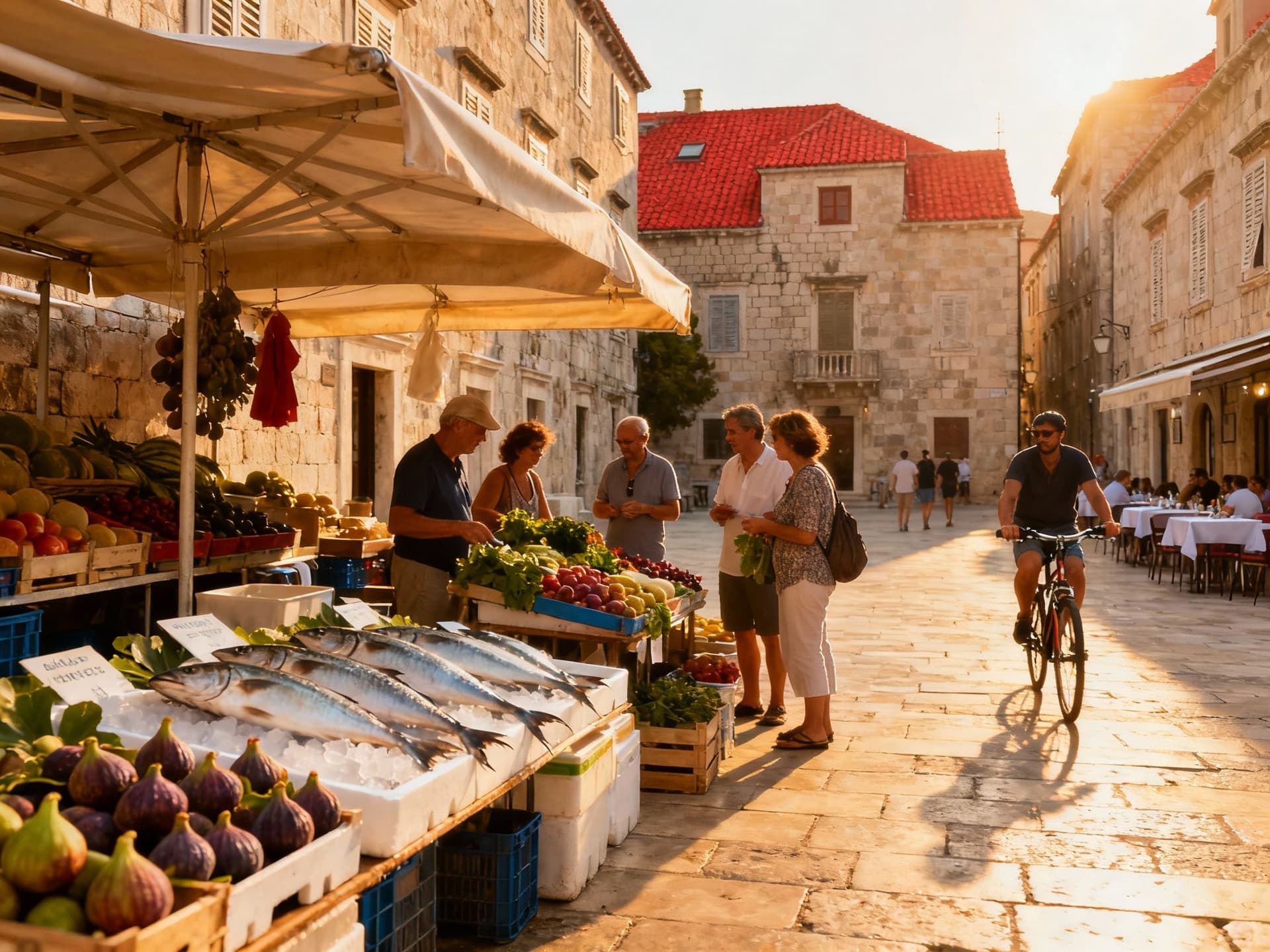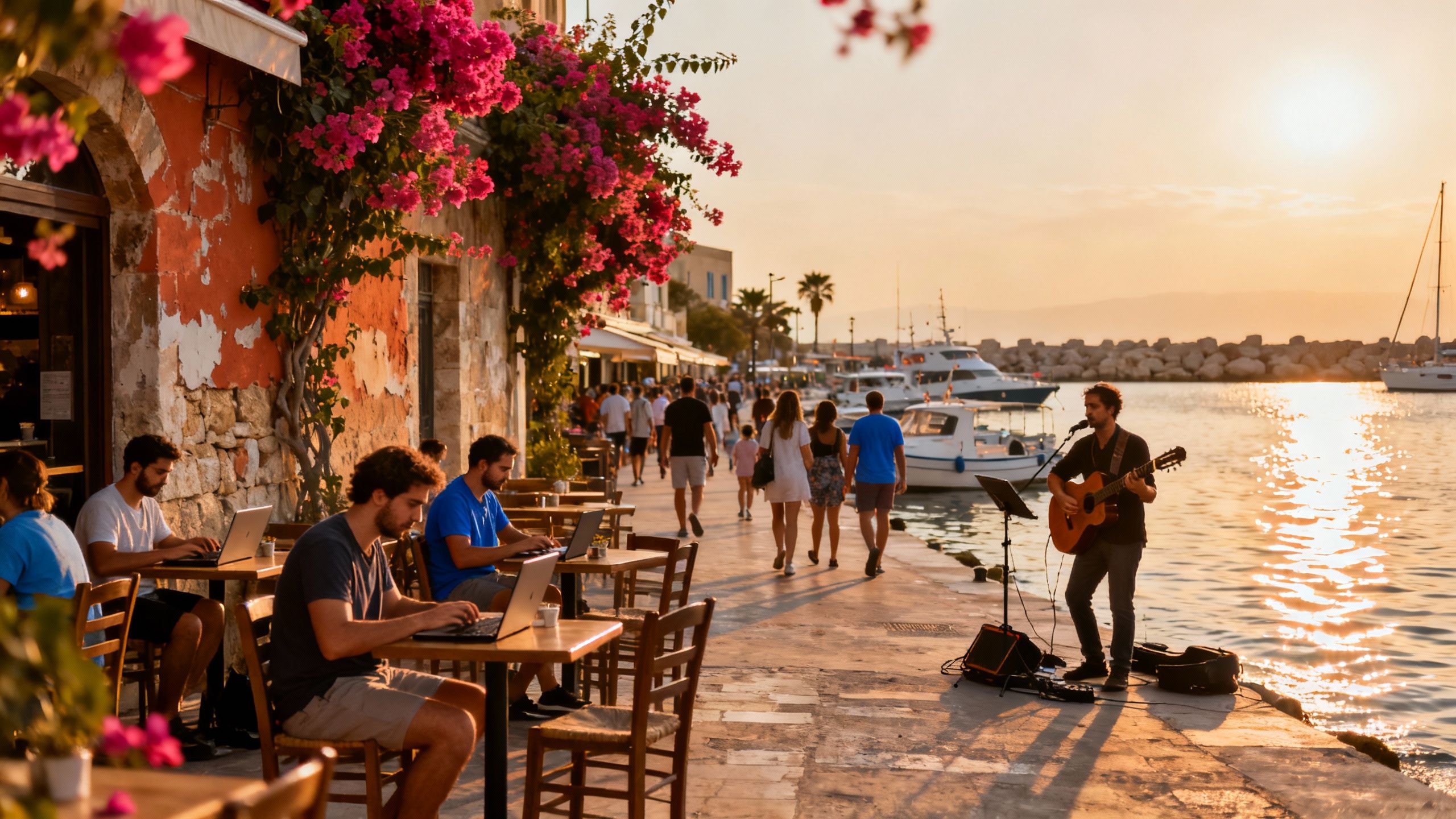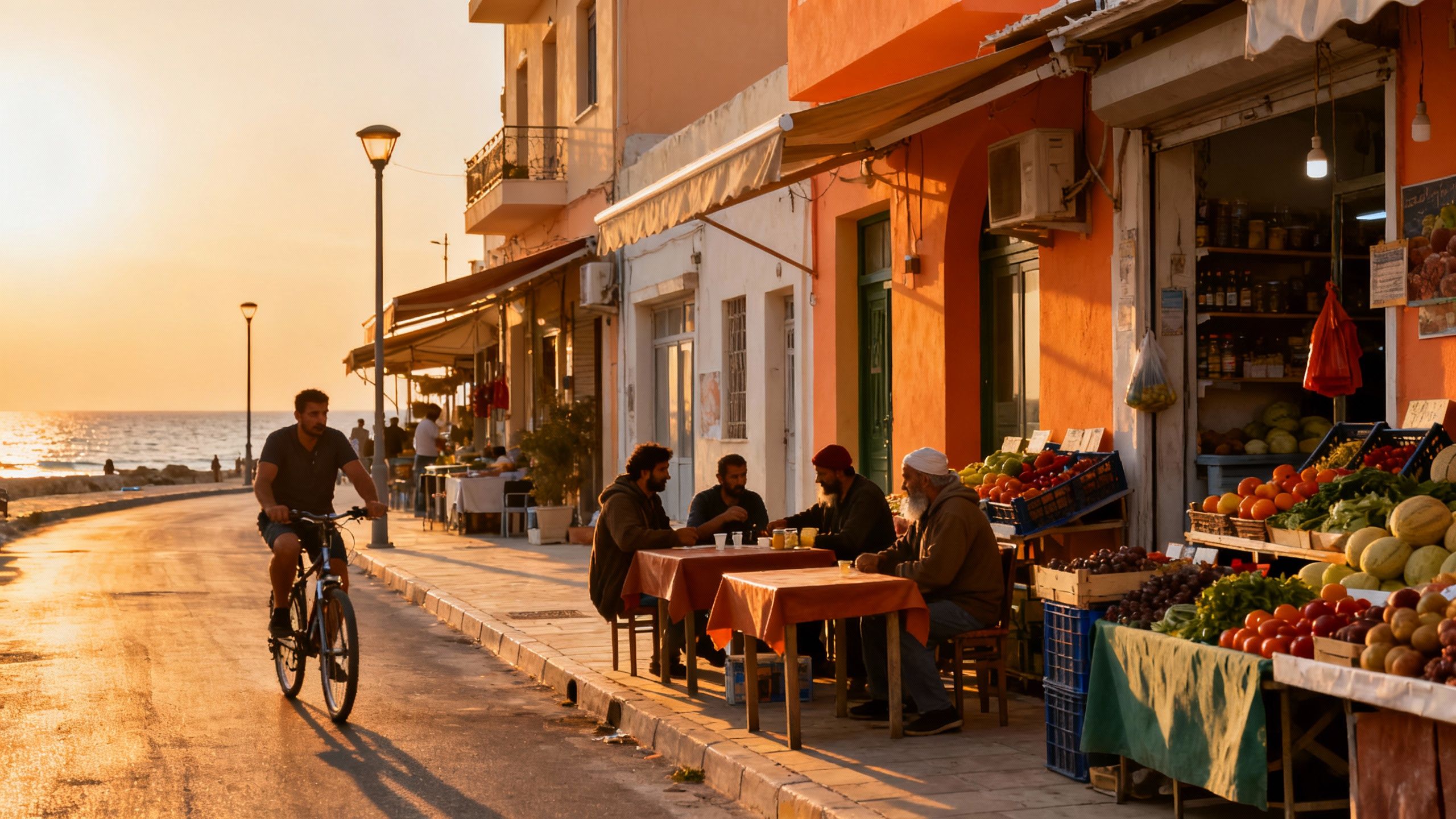Budgeting Croatia: VAT vs Transfer Tax, Lifestyle Costs
Fall in love with Croatia — then budget like a local: account for VAT vs transfer tax, legal fees, Ministry approval and seasonal costs to avoid surprises.
Imagine stepping out at dawn to buy fresh figs at Split’s Pazar, then answering a couple of emails from a sunlit balcony that looks over red-tiled roofs and the Adriatic. That small, ordinary morning — espresso, market banter, a reliable café with good Wi‑Fi — is Croatia. It’s easy to romanticise the coast, but budget surprises (VAT vs transfer tax, municipality levies, seasonal costs) can turn that dream into a financial headache unless you plan. This guide blends the smell-of-sea, market rhythm, and hard numbers so you know how much life in Croatia will actually cost.
Living the Croatian life: scenes and neighborhoods

Croatia’s daily rhythm mixes Adriatic mornings, slow mid‑day pauses, and lively evenings. In Zagreb you’ll find compact terraces, coworking meetups and tram commutes; on Hvar and Korcula the day begins with fishermen unloading the catch and ends with aperitivo on the Riva. Neighborhoods matter: the old town charm of Dubrovnik’s Stari Grad is cinematic but tourist-saturated; Split’s Veli Varos offers kafana culture and narrow lanes that feel lived-in. For nomads, pick places where cafes double as remote offices and the internet is as dependable as the coffee.
Coastal pockets: daily life on the Adriatic
Walk the Riva at dawn in Split, grab burek from a bakery on Ulica Republike, then join a late-morning coworking session at Poduzetnički Centar. Istra’s Rovinj feels like an artist’s postcard: cobbled alleys, local olive oil producers, and quiet lanes after tourist season. Small islands like Vis offer an unplugged pace but require planning for groceries and healthcare. These coastal pockets give you sun, seafood and swim breaks between meetings — but expect seasonal price swings and extra costs for maintenance and tourist-season services.
Inland life: value, space and local routines
Zagreb and continental Croatia deliver better year‑round value and fuller local life: weekend farmers’ markets, theatres, coworking communities and reliable services. Towns like Varaždin or Osijek offer grand squares and lower property prices; you trade some Adriatic glamour for community rhythm, cheaper renovation costs, and bigger gardens. If you’re working remotely long-term, inland towns can multiply your lifestyle for every euro spent — think larger terraces, local produce, and a calendar of cultural events that keep you grounded beyond tourist seasons.
Making the move: money realities behind the dream

The scene is vivid — but budgets are where plans live or die. Recent market analysis shows steady interest and tourism-driven price pressure along the coast, while inland areas remain more affordable. Typical buying costs depend on whether a property is new or resale: new developments are usually sold with 25% VAT, while resale sales typically attract a 3% transfer tax. Add legal fees, agency commission and registration costs and you’re usually looking at 5–15% extra on resale, but much higher (20–35%) on new-builds because of VAT.
What to budget for — quick checklist
Start with the purchase price, then add transfer tax or VAT, lawyer and notary fees, agency commissions, and registration charges. Plan an extra buffer for surveys, translations, municipal certificates (certificate of legal status) and potential Ministry of Justice approval if you’re a non‑EU buyer. Don’t forget annual running costs: utility averages, communal charges, and local holiday‑home levies for some municipalities. For coast properties, budget more for maintenance, short‑term rental compliance, and seasonal service upsells.
Insider knowledge: red flags, smart tradeoffs and local moves
Here’s the real talk I wish someone told me before house‑hunting: a beautiful sea‑view listing doesn’t mean low ongoing costs, and seasonal rental income assumptions often overestimate occupancy. Non‑EU buyers require Ministry approval which can add weeks; new builds with VAT look shiny but are substantially pricier upfront. Check municipal plans and the certificate of legal status — a property outside building zones or with unclear permits can cost double in legal hassle and renovations.
Local tips from expats and agents
Ask for the last three years of utility bills and communal charges before buying — coastal properties spike in costs during July–August. Use an English‑speaking local lawyer to check land registry, planning permits and encumbrances; lawyer fees are a small price for peace of mind. Work with agencies rooted in your chosen neighbourhood — they know which streets are quiet year‑round (e.g., Bačvice side-streets in Split) versus those that become short‑term rental hotspots.
Numbered steps to set a realistic initial budget
Decide coast vs inland and estimate price per sqm in your target (use recent market reports).
Calculate purchase extras: 3% transfer tax for resale or 25% VAT for new builds, plus ~1–2% legal and notary fees.
Add agency fees (2–4% typical), registration and translation costs, and a 5–10% contingency for inspections/repairs.
If non‑EU, factor in Ministry approval times (often several weeks) and potential requirements for bank mortgages in Croatia.
Lifestyle-plus checklist: what to prioritise in property specs
Reliable high‑speed internet and a quiet workspace (fiber where possible).
Easy access to a cafe or coworking space for community and meetups.
Storage for luggage/gear if you plan seasonal travel; secure parking if you’ll drive.
Outdoor living (balcony/terrace/garden) — essential for the Adriatic months.
Local services (market, doctor, transport) within easy reach for long stays.
Final thoughts: living the life and closing confidently
Croatia can be the place where market mornings and remote work rhythms collide beautifully — but the arithmetic matters. Recent market reports show coastal demand remains strong while policy tweaks (property tax reforms) aim to balance the market; keep an eye on legislation that may change annual costs. Start by building a realistic budget that includes VAT/transfer tax, legal fees, and a seasonal maintenance cushion, then tie that to a lifestyle checklist: internet, community, and outdoor space. When you’re ready, partner with a local lawyer and an agency rooted in the neighborhood you love — they turn dreamy scenes into secure purchases.
Swedish, relocated to Marbella in 2018 to chase sun and property freedom. Focus on legal navigation and tax for Nordic buyers.


